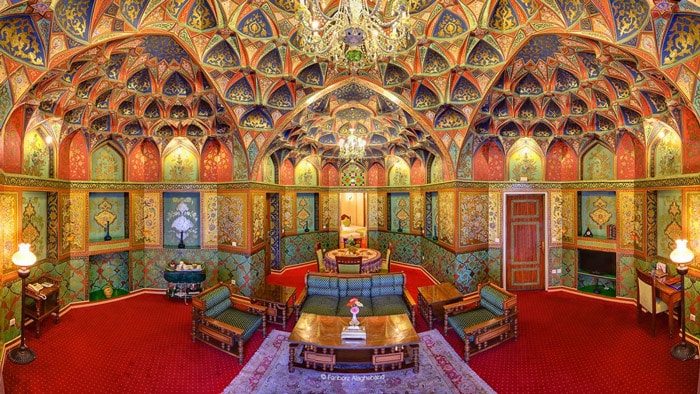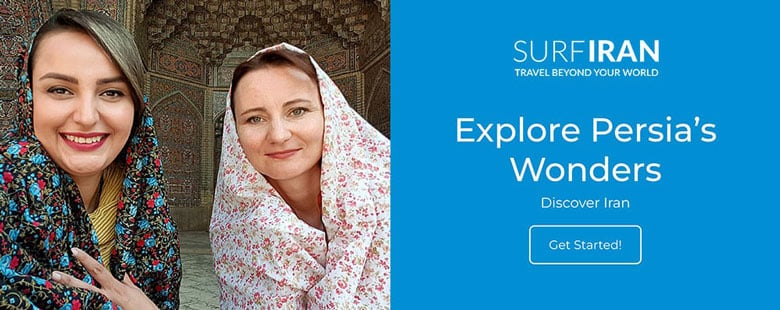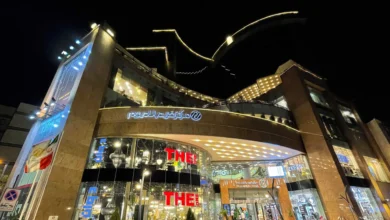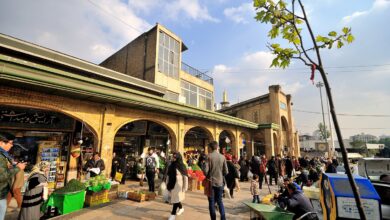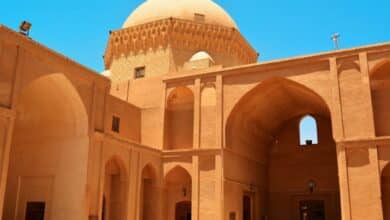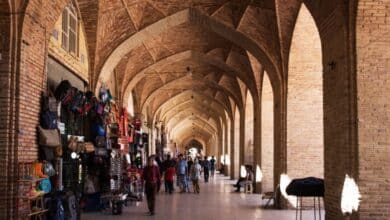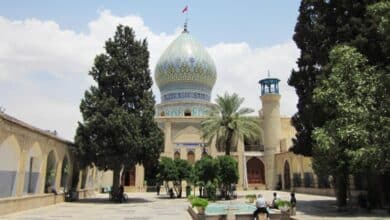Hasht Behesht Palace: Isfahan’s Slice of Paradise
The Architectural Masterpiece of Safavid Dynasty in Isfahan
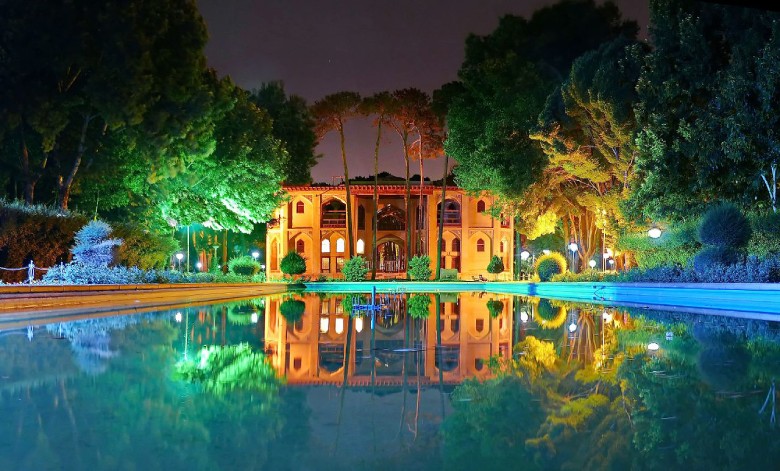
Located in the historic city of Isfahan, Iran, Hasht Behesht Palace exemplifies the architectural and cultural accomplishments of the Safavid dynasty. Constructed in 1669 under the rule of Shah Suleiman, this octagonal structure functioned as a royal pleasure pavilion. Its elaborate design, opulent decorations, and picturesque environment make Hasht Behesht, which translates to “Eight Paradises,” a mesmerizing artifact of Persian heritage and artistry.
Contents
Historical Background of Hasht Behesht Palace
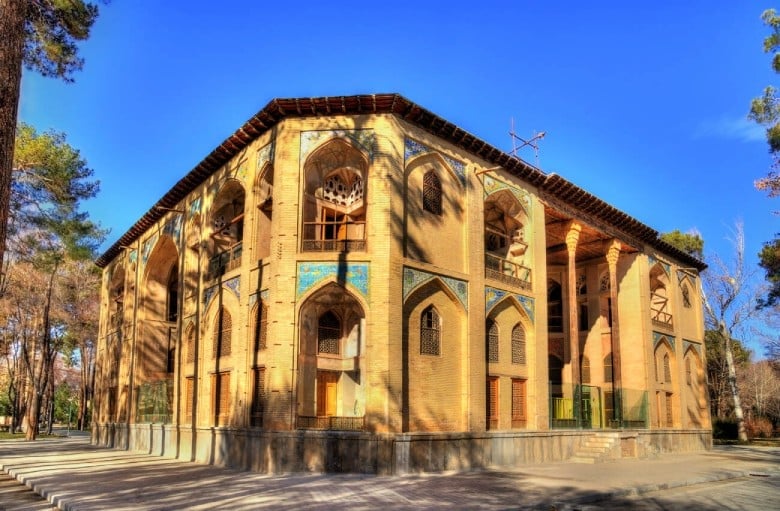
The Safavid dynasty, recognized for its support of the arts, significantly influenced Iran’s cultural legacy, with Isfahan emerging as its architectural center. Under the reign of Shah Suleiman, Hasht Behesht was built as a serene retreat within the vast Chahar Bagh garden complex.
This location, selected for its verdant scenery, offered an ideal setting for a royal pavilion designed to represent paradise on Earth. The name “Hasht Behesht” references the concept of paradise found in Persian poetry and Islamic cosmology, symbolizing the ruler’s desire to create a terrestrial Eden for his court.
Architectural Design and Layout

The distinctive octagonal design of the palace exemplifies the Safavid architectural inclination towards symmetry and geometric balance. Hasht Behesht Palace, constructed over two levels, comprises eight chambers that encircle a central hall, a layout inspired by the Islamic vision of paradise divided into eight parts. The central hall, characterized by its openness and luminosity, acts as the centerpiece of the palace, inviting visitors to engage with a rich interplay of color, light, and spatial dynamics.
Equally enchanting is the palace’s exterior, adorned with arches, columns, and balconies on all sides. A network of water channels once meandered around the structure, providing cooling effects and contributing to a tranquil ambiance. These elements now serve as enduring symbols of traditional Persian garden aesthetics, which prioritize symmetry and the meaningful incorporation of water.
Interior Decoration and Artistry
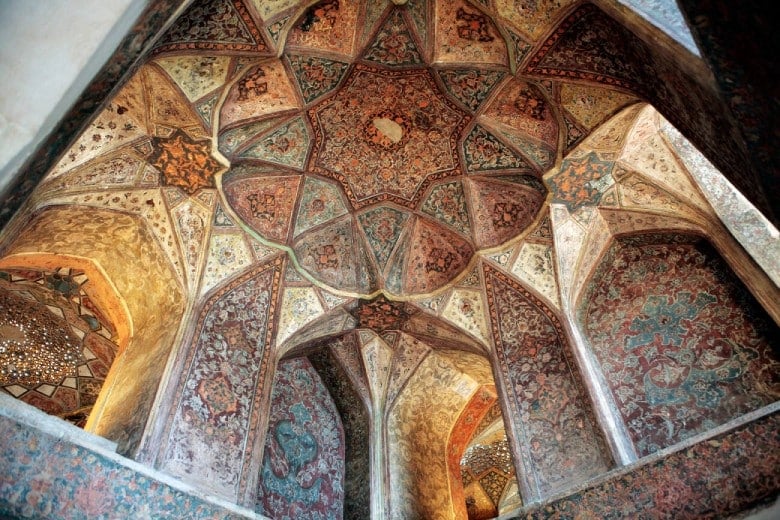
Hasht Behesht Palace captivates visitors with its stunning array of decorative features that exemplify Safavid artistry. The ceilings are embellished with exquisite mirror mosaics and delicate paintings, while the walls display intricate stucco work and vibrant tiles. This elaborate ornamentation serves not only as a testament to skilled craftsmanship but also as a reflection of Persian aesthetics, where beauty and significance are intricately linked.
Particularly remarkable are the detailed wood carvings and lattice windows, which permit light to permeate the rooms, creating a dynamic interplay of light and shadow. This effect imparts a dreamlike quality to the space, further enhancing the palace’s enchanting atmosphere. The walls are adorned with floral and geometric motifs, representing the harmony of nature and the divine beauty of paradise.
Hasht Behesht Palace, Gardens and Landscape

Hasht Behesht is an integral component of the Chahar Bagh complex, renowned as one of Iran’s most celebrated Persian gardens. The garden’s design adheres to the classical Persian “Charbagh” or “Four-Garden” layout, which is segmented into quadrants by means of water channels.
This arrangement represents the Islamic concept of paradise, characterized by rivers that flow in four directions, thereby forming a miniature representation of heaven. The meticulously arranged trees, flowers, and pathways contribute to the creation of a tranquil refuge, allowing royalty to retreat from the pressures of court life.
The Current State and Preservation Efforts
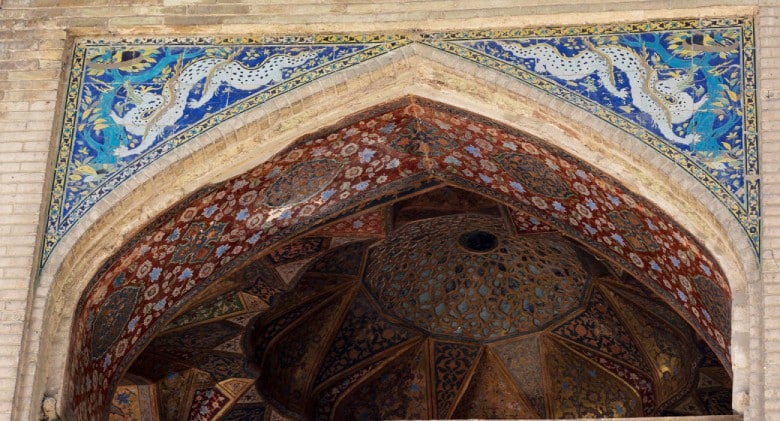
Although Hasht Behesht Palace continues to exude beauty, the passage of time has undeniably impacted this historic palace. Ongoing restoration initiatives aim to safeguard its architectural integrity and elaborate details. Both UNESCO and the Iranian government have acknowledged the significance of Hasht Behesht and similar sites in the preservation of Persian cultural heritage.
Throughout the years, conservationists have dedicated their efforts to shielding the palace’s tiles, murals, and gardens from the effects of time and contemporary pollution. Presently, Hasht Behesht is accessible to the public, attracting tourists, historians, and art enthusiasts from across the globe who are enchanted by its aesthetic appeal and historical importance.
Some Perspective of Hasht Behesht Architecture
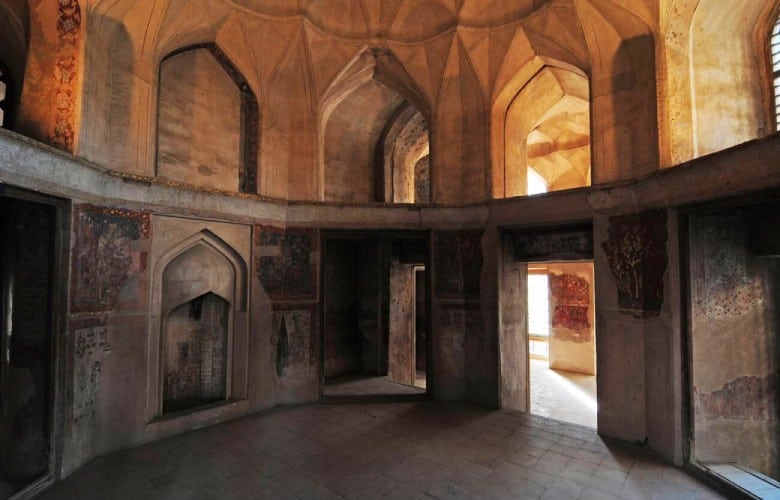
The architecture of the Hasht Behesht building, associated with the Safavid period, exhibits notable characteristics similar to those found in the architectural styles of all Islamic and Iranian eras.
The Domed Roof
Similar to numerous structures from the Safavid period, Hasht Behesht Palace is characterized by a prominent central dome. This dome serves as a significant architectural element, symbolizing the cosmic vault and frequently appearing in Persian-Islamic architecture to signify the heavens. It is supported by a series of arches, exemplifying traditional Persian vaulting techniques. These domes are often elaborately adorned, designed not only for structural integrity but also for their acoustic qualities and visual appeal.
Tile Work and Decoration
Tile work stands out as one of the most notable aspects of Hasht Behesht. The palace’s walls, particularly within the interior, are embellished with intricate islimi (arabesque) motifs, floral patterns, and calligraphic inscriptions. The tile work showcases vibrant hues, especially blue, turquoise, yellow, and green, which are characteristic of Safavid-era ceramics.
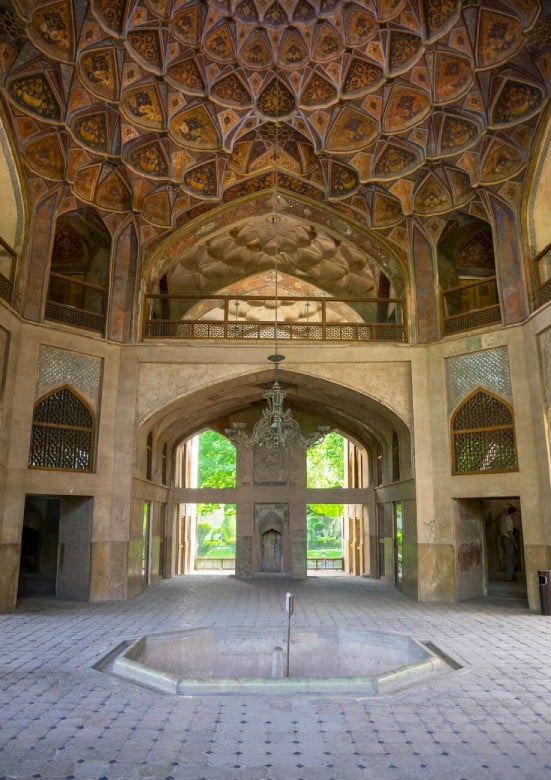
Use of Water
In keeping with the design principles of many Persian gardens, water plays a vital role in the layout of Hasht Behesht. The central garden features multiple water channels, fountains, and pools, which not only enhance the aesthetic appeal of the area but also provide a cooling effect in the warm climate of Isfahan.
Symmetry
The design of the building emphasizes symmetry and proportion. The balanced arrangement of the garden, rooms, and decorative elements reflects the classical Persian ideals of harmony, order, and equilibrium.
Use of Iwan
The traditional Iwan, a spacious vaulted area often open on one side, is a prominent characteristic of Safavid architecture. At Hasht Behesht, iwans are incorporated into the surrounding rooms, opening onto the central courtyard and serving both functional and aesthetic purposes.
Final Words
Hasht Behesht Palace stands as a remarkable gem of Iranian architecture and a significant representation of Safavid culture. It embodies the elegance, opulence, and artistic essence of a past era, continuing to evoke admiration. As guests wander through its gardens, appreciate its architectural design, and examine its ornately adorned halls, they are immersed in the royal lifestyle of 17th-century Persia, gaining insight into the paradise envisioned by Shah Suleiman.
For those with an interest in Persian architecture, history, or culture, a visit to Hasht Behesht in Isfahan promises an unforgettable exploration of the beauty and magnificence of Safavid Iran.
Hasht Behesht Garden FAQ
Why is Hasht Behesht called the “Eight Paradises”?
The name “Eight Paradises” refers to the pavilion’s octagonal structure and symbolic representation of paradise, an important concept in Persian art and literature.
What makes Hasht Behesht unique compared to other Safavid buildings?
Hasht Behesht stands out for its intimate scale and personal feel, as it was used by royalty for relaxation rather than as a public or ceremonial space. Its octagonal shape, combined with airy, open spaces and lush gardens, create a unique blend of comfort and elegance.
What is the architectural style of Hasht Behesht?
Hasht Behesht is designed in the Isfahani style, typical of Persian architecture during the Safavid period.
